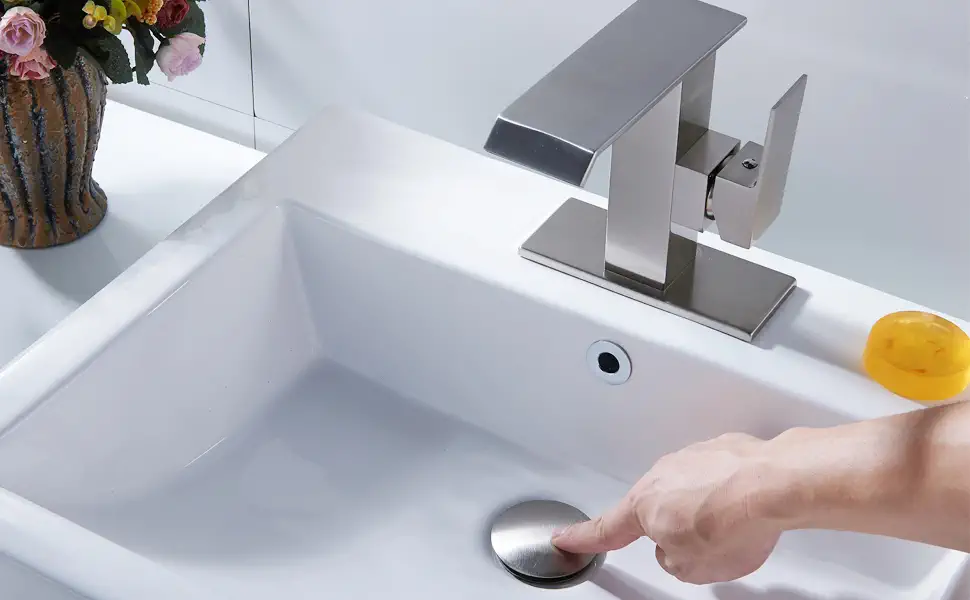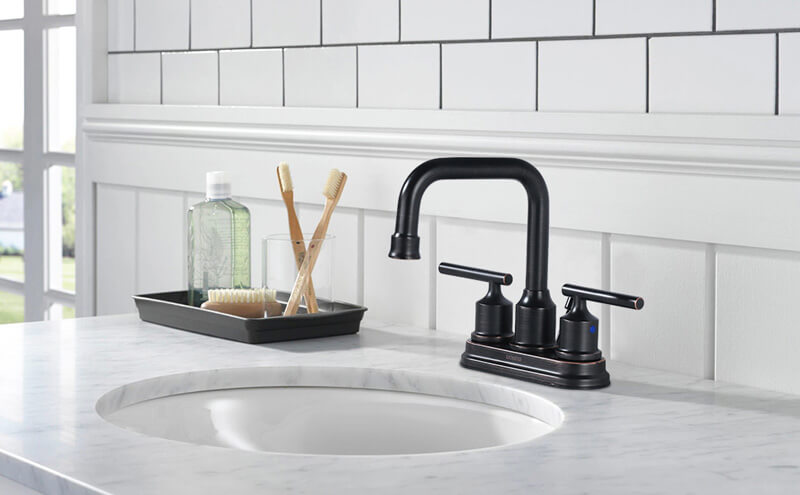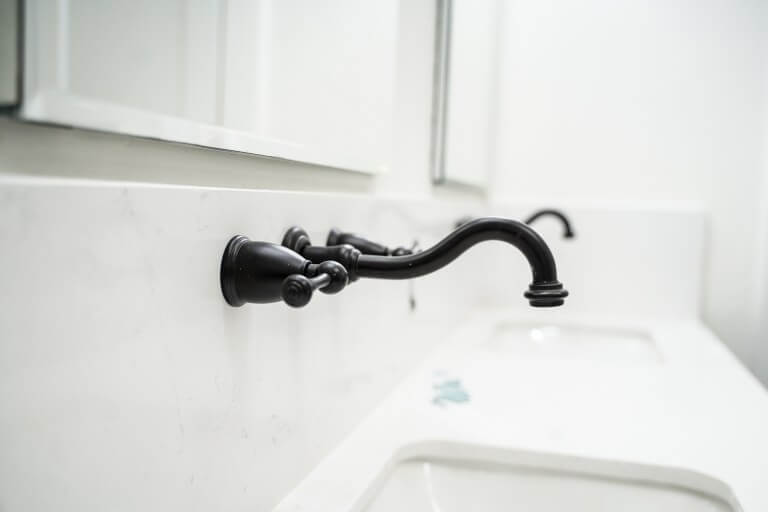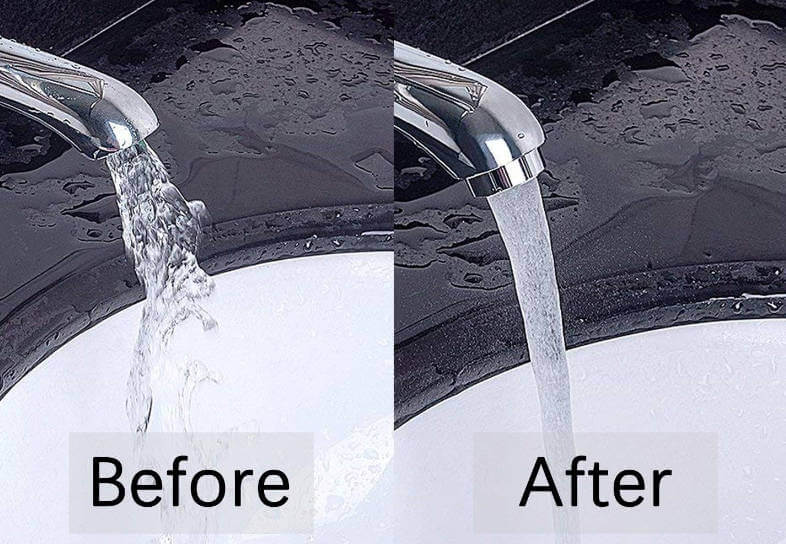
It’s really a headache that a faucet still drips after it is turned off. If you have the same trouble, this post is right for you. To fix it out, I have done lots of research about the cause of leaky faucet. Here’s the summary and I hope it can help you.
In fact, if your faucet still drips or flowed from the water outlet after you turn it off, the culprit is usually a faulty stem or cartridge component. The mechanism in the valve housing of the faucet is called the valve stem or spool, which is used as an online stop valve.
However, the causes of dripping from the faucet may vary from various kinds of faucet. So, let’s continue reading and taking a closer look at other possible causes of dripping from the tap.
Causes for a faucet to drip
Worn-out washer
This is the most common cause for a faucet to drip by far. Here, the drip is from the spout. Further, this may also occur in compression faucets.
Damaged O-ring
If the dripping is under or around the handle, it is most likely caused by a damaged O-ring. It is a disc fixed on the stem screw and used to fix the handle of the faucet. Also, this issue is specific to cartridge faucets.
Corroded valve seat
The valve seat is connected to the faucet and the water outlet. When the valve seat corrodes, the faucet starts to drip around or under the handle. Usually, the accumulation of sediment will cause this situation. Occasional cleanup will be a preventive measure.
Worn out cartridge
A worn out cartridge may be the cause of dripping from the faucet. The inlet and outlet seals of the filter cartridge will wear out over time due to the accumulation of deposits. In addition, this type of leakage only occurs on the cartridge faucet.
Irregular water pressure
Although rare, fluctuating water pressure can also cause the tap to drip. In addition, this irregularity of water pressure may cause bigger problems. Therefore, if the problem persists, it is best to notify your local water supplier.
Fixing a Dripping Faucet
I recommend a professional plumber for the job. Yet, you can do the job yourself as it is not so complicated. After all, it could be fun too.
Your faucet is going to one of four types of faucets out there. They are compression, ceramic-disc, cartridge, and ball faucet. Each has its own replacement parts and repairing methods.
Before you start, turn off the water supply to the faucet. You would most likely find it underneath the sink. Next, make sure you plug the drain in your sink. If your sink doesn’t have a plug, you can use a cloth or rug. This is to make sure that no parts go down the drain. Now you are ready to begin.
Compression Faucet
A compression faucet usually has two handles. One for hot and the other for cold. Also, the handles are usually twisted to open or close the water flow. But, the other three types of faucets all have one handle or swivelling arm to control both hot and cold water.
First, remove each handle. Sometimes you may have to pry off the handle and then unscrew. Next, use a wrench and remove the nut. Underneath, you will find the stem that sits on the O-ring, which in turn sits on the seat washer.
The seat washer can get worn out over time as it’s made of rubber. If your faucet is dripping from the spout. This is most likely the cause of it. But, if the dripping is from around the handles, you will need to replace the O-ring.
Ceramic-disc Faucet
The first step is to remove the escutcheon cup by unscrewing and removing the handle. Thereafter, unscrew and remove the disc cylinder. You will be able to identify it by looking at its underside, where you will see several neoprene seals.
Take the disc that you removed to the hardware store and get the exact replacement. Then, place the ceramic disc exactly where you removed it from. Afterwards, reassemble the handle as how it was.
It is important that you turn the water on very slowly. Allowing the water to flow too forcefully could damage the ceramic disc.
Cartridge Faucet
Unscrew and remove the handle by tilting it backwards. Sometimes, you may have to pry off the decorative cap first. Next, remove the retaining clip if needed. It is usually made of plastic and it holds the cartridge in place. You can use a pair of pliers to remove it. Thereafter, pull the cartridge in a way that it sits straight up. This is usually the position when the water is fully open.
Now, remove the spout and set it aside and locate the O-rings. Cut the old O-rings using a utility knife. Make sure to coat the new O-rings with plumber’s grease before installing them. After replacing the O-rings, reassemble the handle and that’s it.
Ball Faucet
Ball faucets have many parts that may need a replacement. And, some these parts would need specialised too. Thus, it is advisable to buy a replacement kit. These are inexpensive and comes with all the tools you need. And, they are available in most home repair shops. Using such a kit will help replace the faucet cam assembly and not the entire faucet.
Start by removing the handle and placing it aside. Next, using a pair of pliers remove the cap and collar. Thereafter, use the tool provided in your replacement kit to loosen the faucet cam. And, remove the cam, washer, and ball. Then, remove the inlet seals and springs using needle nose pliers.
Remove the O-rings by cutting off the old ones. Before installing new ones, remember to apply plumber’s grease. Install the new springs, valve seat, and cam washers that came with the replacement kit. Afterwards, reassemble all the part and finally the handle. Remember that the order of assembling is the reverse of removing.
Maintaining Your Faucet
Faucets in general need very little maintenance. This is true especially for faucets made by leading manufacturers. Even so, you may still need to give a good shine from time to time.
To give your faucet a nice good shine, you can use window cleaner or soap on soft cloth. Avoid using steel wool or rough soap pads with hard bristles to scrub the faucet as it may ruin its finish. Before using any cleaning agent, read the instructions to see if it would be suitable for your faucet.
To clean matte finished faucets, you can use an aerosol or liquid furniture polish. Moreover, the furniture polish gives a nice uniform appearance and protects from fingerprints. This is due to the silicon oil found in the polish.
If you are in a hard water area, you are most likely already facing its challenges. Although it can be high in mineral content, it can also tend to clog up your faucet and drain. You can get rid of these mineral deposits by using vinegar. To elaborate further, you can soak the parts inside the faucet in vinegar for at least four hours. Thereafter, you can brush off the sediments using a toothbrush.
From time to time your faucet may need minor repairs. The common indicator that your faucet needs a minor repairs is when it starts to drip. In most cases, a minor repairs has generally to do with changing the springs and washers. As you saw above, there are four types of faucets and each one of them has its own way of repairing.
In conclusion, there are some types of faucets that come sealed. Hence, they cannot be removed. In such situations, the only option is to replace the entire unit. When you do replace, make sure it is a model that can be removed.
Related Questions
Why does my new faucet drip after shutting off?
Although rare, it is possible that your brand new faucet has faulty seals, washers or O-rings. After identifying the source of the drip, you can try replacing the relevant part. Or, even better would be to return the faucet and get a replacement.
When should I let my faucet drip?
If the temperature drops below 28 degrees for at least 4 hours, you can let your faucet drip to prevent freezing. This is usually applicable only to outdoor faucets.
How much water does a dripping faucet waste?
According to the USGS(United States Geological Survey), approximately 15,140 drips from a faucet makes up one gallon of water. Furthermore, if a faucet dripped once every second every day, it would take four and a half hours to make one gallon.
 WOWOW Faucets
WOWOW Faucets





您好!Please sign in